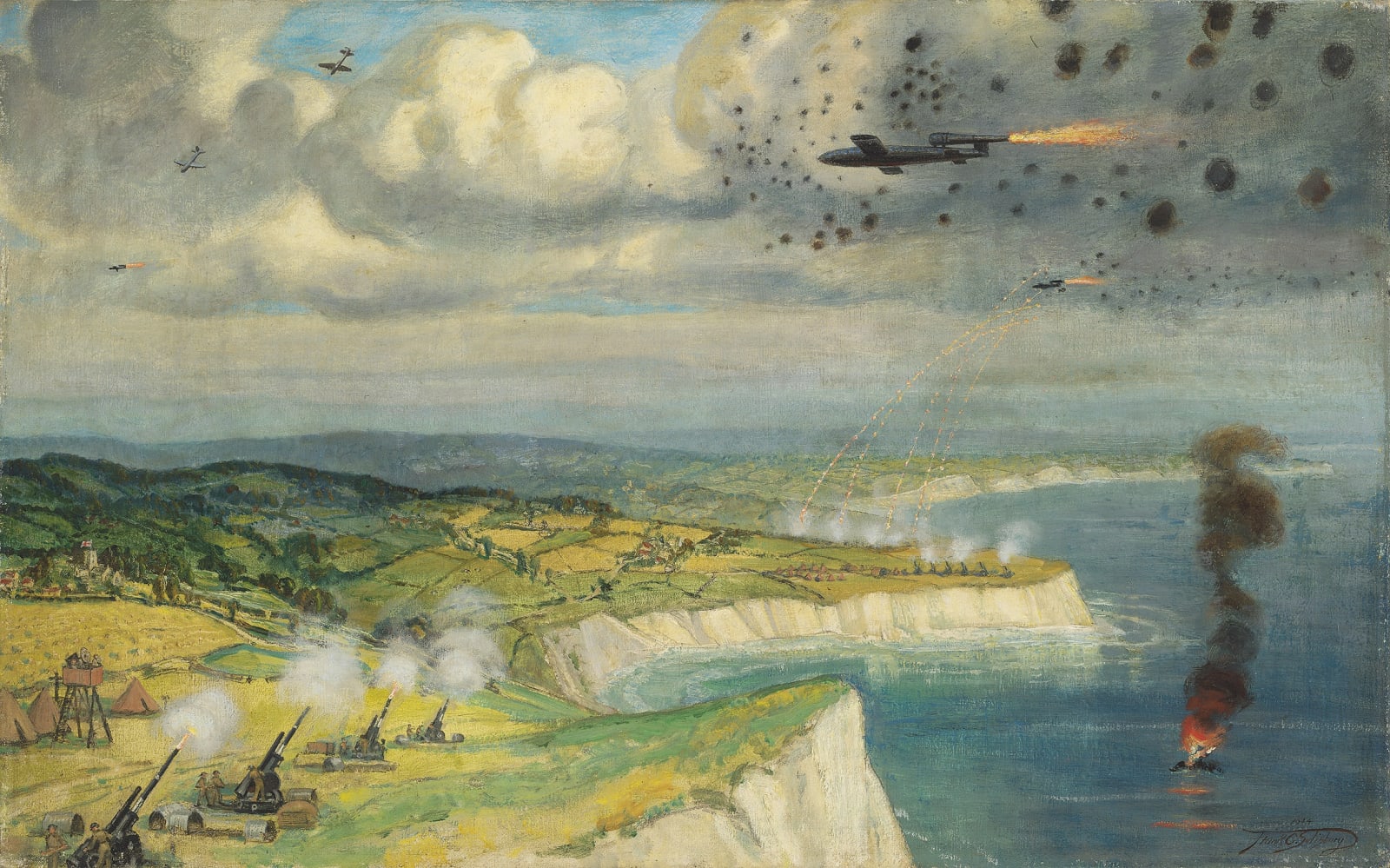Frank Owen Salisbury, RI, ROI British, 1874-1962
Provenance
commissioned by Duncan Sandys, Chairman of The Defence Committee, London, 1944.
with James Bourlet & Sons, Ltd., London.
In 1944 Frank Salisbury was commissioned to paint this work by Duncan Sandys, who was famously married to Diana Bailey, the eldest daughter of Sir Winston Churchill. Sandys had previously commissioned Salisbury to paint a portrait of his father-in-law in 1943, a painting that hung in the family home at Vincent Square until sold by Christie’s on 27th November 1997, lot 19 for £111,500. Churchill and Sandys were also professionally linked, with the Prime Minister asking Sandys, then Parliamentary Secretary to the Ministry of Supply, to coordinate all rocket intelligence in light of a new threat posed by Nazi Germany.
Prompted by the D-Day landings in Normandy on 6th June 1944, the Germans began firing V1 flying bombs to Britain just a week later, on 13th June. Development of these devices, known by the Allies as ‘Doodlebugs’, had started early in the Second World War at a secret rocket research centre at Peenemunde on Germany’s Baltic coast. They were effectively unmanned bombs with wings, which kept flying until running out of fuel, falling from the sky and exploding. Thousands were launched from sites on the French and Dutch coasts during the summer of 1944 and at peak, around a hundred bombs a day fell on London and southern England, causing widespread damage and thousands of casualties.
Sandys chaired the War Cabinet Committee for defence against German V-weapons, redeploying Anti-aircraft guns from the North Downs to the south coast and assigning fighter aircraft to intercept the rockets. It did not prove to be an easy task, such small and fast moving targets were very difficult to hit owing to the V1’s cruising altitude being just above the effective range of lighter guns, and just below the ideal range of heavier guns. Further, fighter aircraft required high speed and excellent low altitude manoeuvrability whilst also having enough fire power to ensure destroying the rockets in the air. Fortunately, well timed advances in radar technology benefitted the anti-aircraft effort hugely, aiding direct weapons to targets and the hit rate improved from one Doodlebug for every two-thousand five hundred shells fired in June to one for every hundred by the end of August. Ultimately, it was the continued advance of the Allied ground forces in France that thwarted Hitler’s secret weapon, as more and more launch sites were captured.
This painting depicts a group of German Doodlebugs emerging from the Channel to fly over anti-aircraft guns based most likely in Kent. One has already been downed into the sea, with another on the left seemingly in free-fall having also been hit. Frank Salisbury was a well-known portrait artist who painted six American Presidents as well as Winston Churchill’s portrait more than any other artist. This painting is therefore a slight digression for him into War Art, but one that he has achieved effortlessly, perhaps taking inspiration from artists such as Charles Pears and Norman Wilkinson to show action in the heat of battle.
